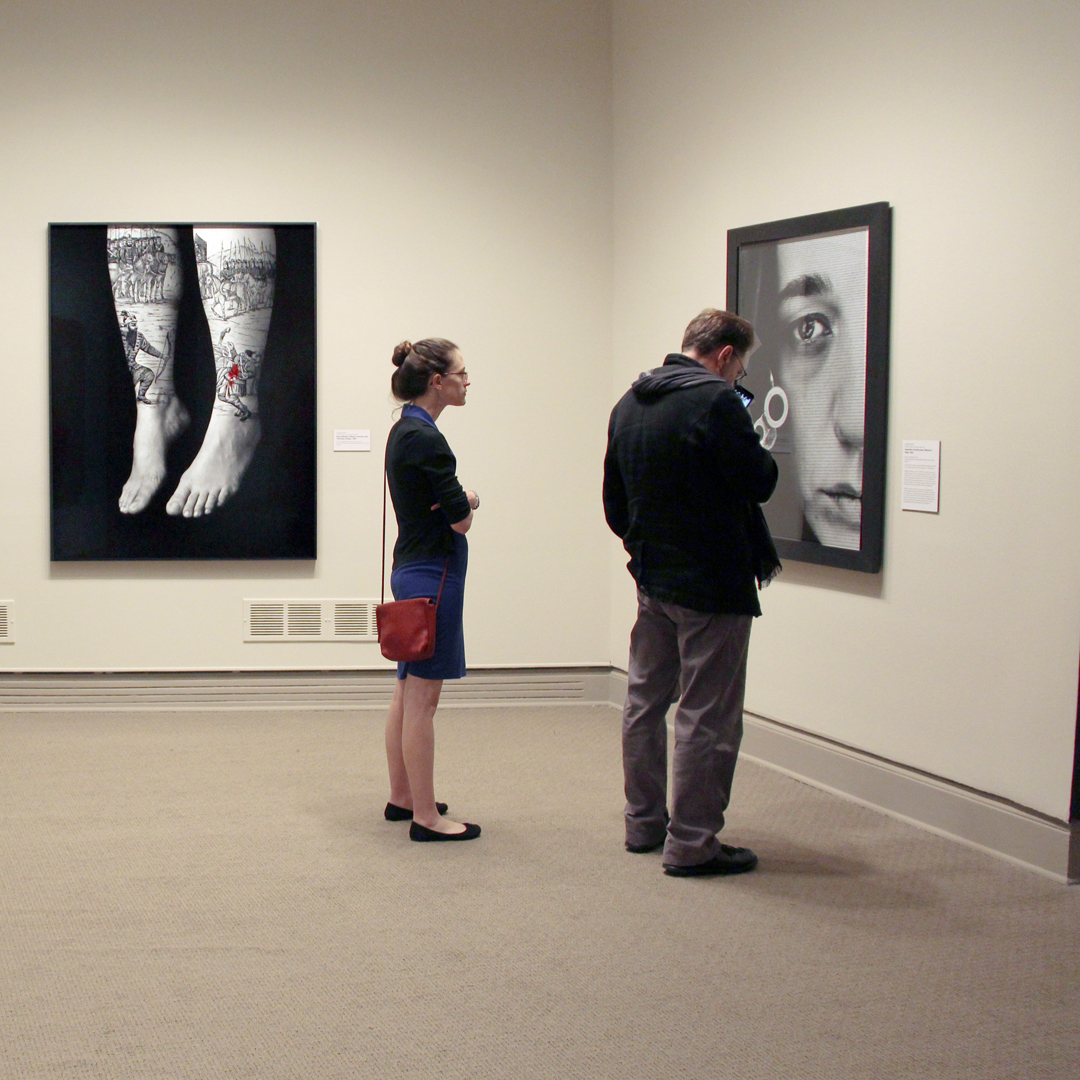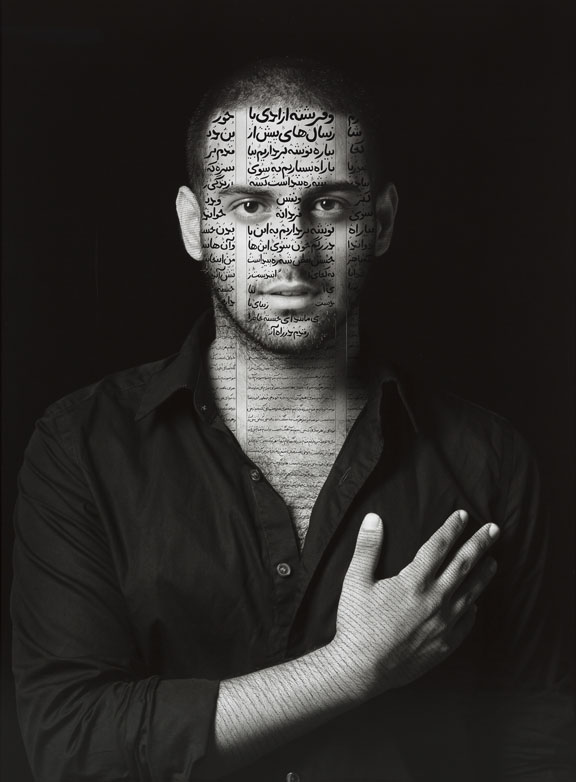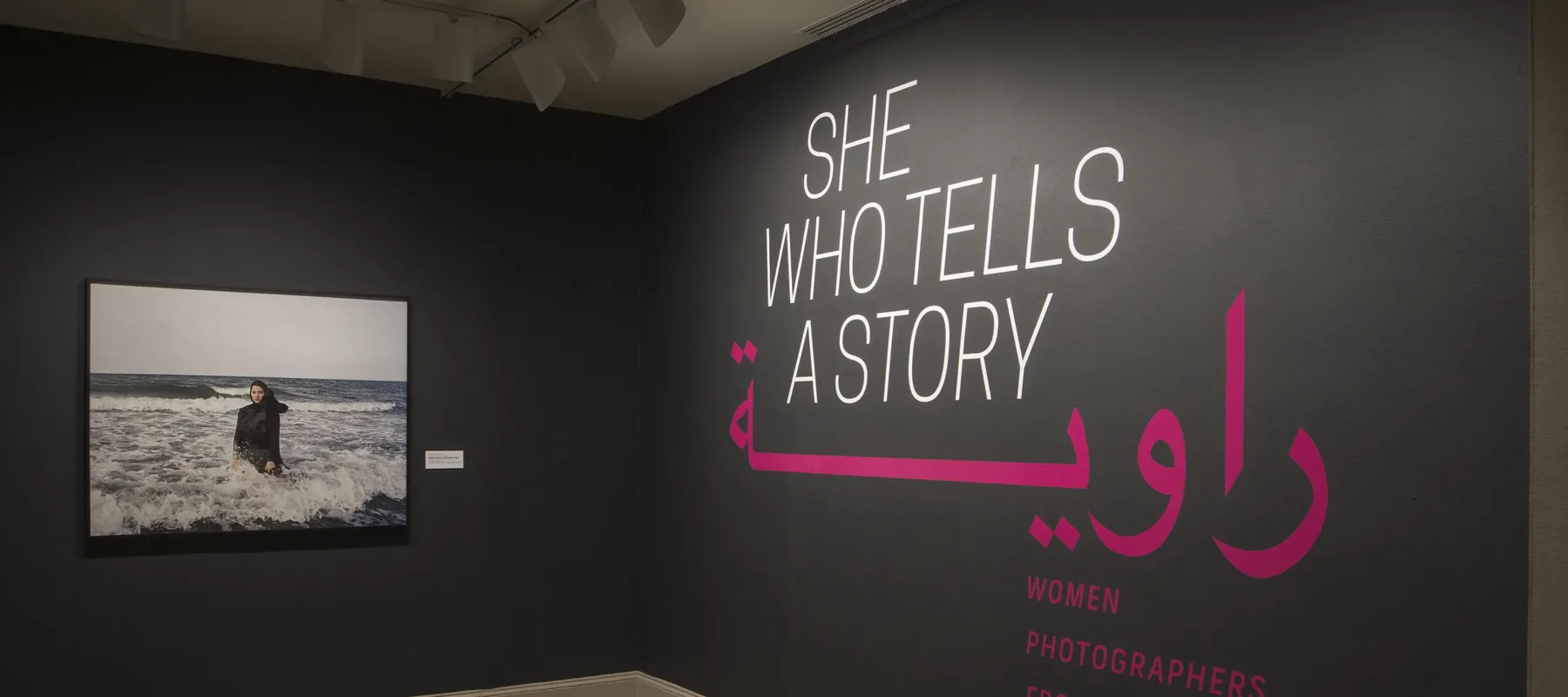In Arabic, the word rawiya means “she who tells a story.” Each artist in in NMWA’s summer exhibition She Who Tells a Story: Women Photographers from Iran and the Arab World offers a vision of the world she has witnessed.

Shirin Neshat
(b. 1957, Qazvin, Iran; lives New York City)
Shirin Neshat moved to the United States during the Iranian Revolution (1979) and studied fine arts. In 1990, Neshat returned to visit Iran and found a changed country. Inspired to create her best-known photographic series Women of Allah (1993–97), Neshat wrote verses by contemporary Iranian women writers across the surface of her photographs in Farsi.
In Her Own Words
“Art is our weapon. Culture is a form of resistance.”—Shirin Neshat, in a 2010 TED talk
In a way, all of my photographic work is inscribed with poetry. Poetic works allow us to say everything; they offer a subversive language that can transcend the law.”—Shirin Neshat, in an Artforum article
“Under all circumstances, [Iranian women] have pushed the boundary, they have confronted the authority, they have broken every rule in the smallest and the biggest way and once again they proved themselves. . . . Iranian woman have found a new voice and their voice is giving me my voice.”—Shirin Neshat, discussing the Iranian Green Movement in a 2010 TED talk
What’s On View?
Five photographs, including one from Neshat’s “Women of Allah” series (1993–97), and four from “The Book of Kings” (2012) are included in the exhibition.

“The Book of Kings” marks Neshat’s return to black-and-white photography. Neshat found inspiration in stories from participants in the Arab Spring in 2011 and protesters from the Iranian Green Movement in 2009. One portrait on view, Ibrahim (2012), belongs to a part of “The Book of Kings” series Neshat calls the Patriots. The figure meets the viewer’s gaze with his right hand placed over his heart. Neshat inscribed the portrait with calligraphic verses in Farsi from contemporary Iranian poetry, giving the work a powerful effect.
Neshat borrowed the title of her series from the Shahnameh (Book of Kings), an epic Persian poem written a thousand years ago by the poet Ferdowsi. The epic narrates the deeds of legendary and historical kings of Iran, including tales of heroes and villains. Interested in the concept of martyrdom, Neshat says her series explores “how the notions of patriotism, faith, and self-sacrifice always intersect with violence, atrocity, and ultimately death.” She connects triumphs and tragedies of the past to contemporary political demonstrations in Iran and the Middle East. “Perhaps that’s why I became an artist,” says Neshat, “I could build a bridge in between myself and my country. . . re-interpreting historical narratives which I’ve never witnessed but only imagined.”
Visit the museum and explore She Who Tells a Story, on view through July 31, 2016.
